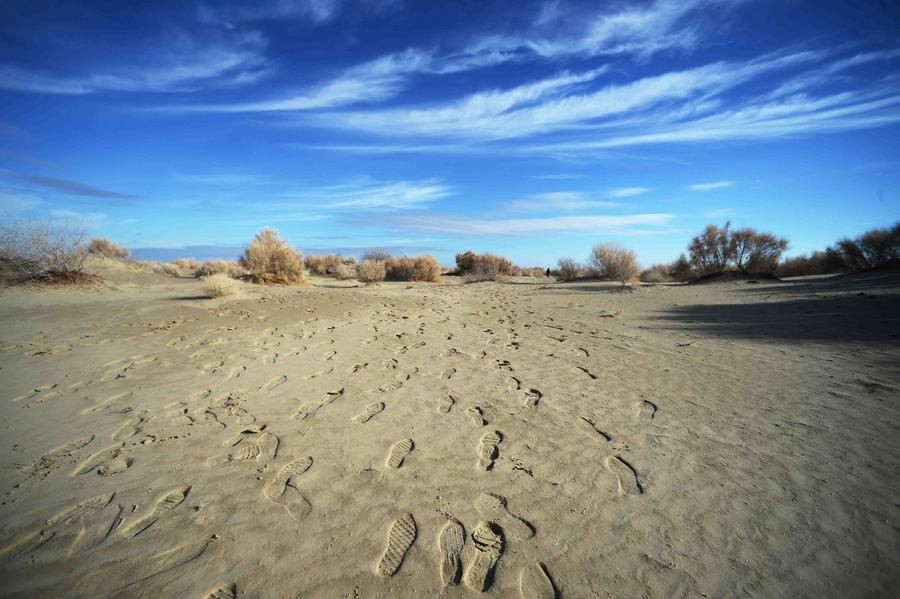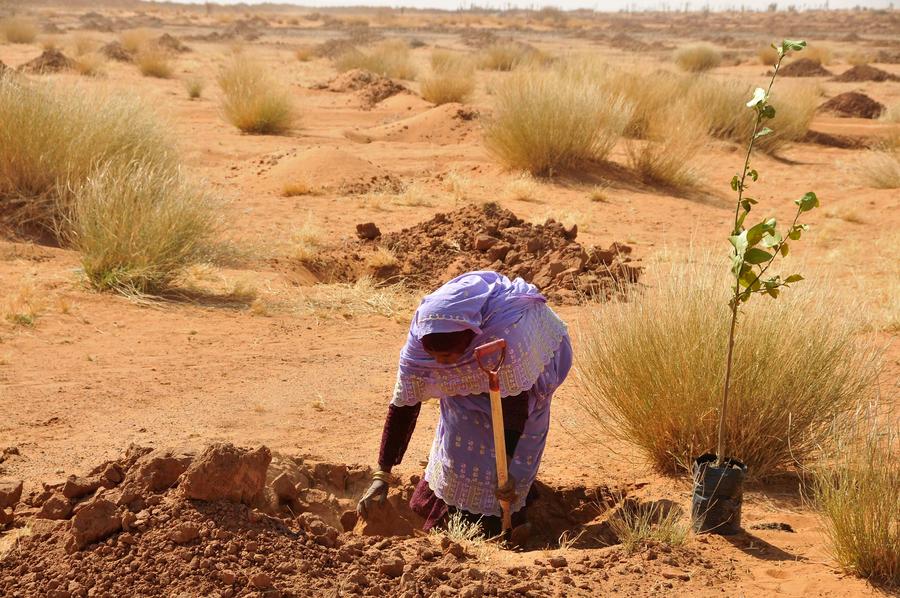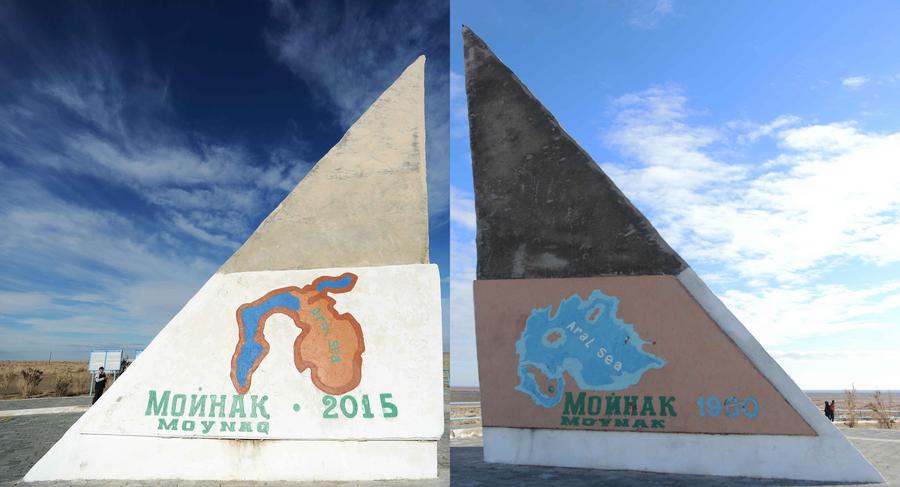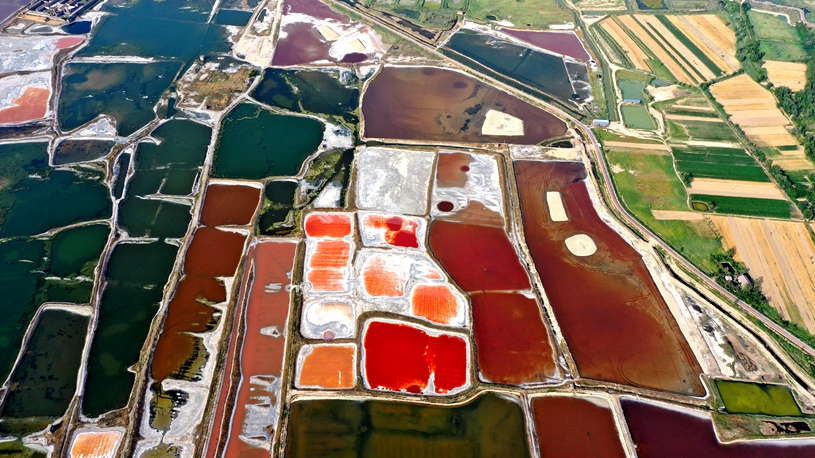
"Up to 40 percent of the world's land is already degraded, affecting close to half of humanity."
BEIJING, June 18 (Xinhua) -- As Monday marks the World Day to Combat Desertification and Drought and the 30th anniversary of the United Nations Convention to Combat Desertification (UNCCD), global attention converges on the critical need to address desertification and other forms of land degradation.
Aiming at mobilizing support for sustainable land management, the theme chosen for this year is "United for Land: Our Legacy. Our Future."
"Up to 40 percent of the world's land is already degraded, affecting close to half of humanity," said UNCCD's executive secretary Ibrahim Thiaw.
The future of our land is at stake. Here is what you need to know about desertification.
WHAT IS DESERTIFICATION?
Desertification refers to land degradation in arid, semi-arid and dry sub-humid areas resulting from various factors, including climatic variations and human activities, according to the UNCCD.
More colloquially, desertification is a form of land degradation by which fertile land becomes desert.
Today, human beings are facing the serious problem of land degradation. According to the UNCCD's report released in February, every second, an equivalent of four football fields of healthy land becomes degraded, adding up to a total of 100 million hectares every year.
Land degradation results from a blend of natural forces and human activities. Extreme weather conditions, particularly drought and climatic variations constitute primary natural factors.
Meanwhile, human activities such as expanding agricultural and grazing lands, industrialization and urbanization play vital roles in exacerbating these processes.
With land comprising only about 30 percent of Earth's total surface area, and suitable habitable land even more limited, the pressing challenge of desertification and other types of land degradation severely affects global sustainable development and threatens human security.

HAZARDS OF DESERTIFICATION
Land degradation is now escalating into an environmental crisis, leading to the loss of biodiversity, reduced agricultural productivity, and exacerbated climate change.
These environmental crises threaten the livelihoods of millions of people, especially those in vulnerable regions, and contribute to increased poverty and migration.
For example, the Sahel region, spanning across Africa just south of the Sahara Desert, is one of the most well-known areas affected by desertification.
As fertile soil erodes and vegetation vanishes, agricultural productivity plummets and famines severely afflict the area. What's more, the deteriorating land conditions force communities to migrate, often leading to conflicts over resources.
Overgrazing and deforestation have turned productive land into desert, causing a loss of native plants essential for herbivores like the Dorcas gazelle and thereby threatening predators such as the African wild dog.

Once the fourth-largest lake in the world, the surface area of the Aral Sea in Uzbekistan shrunk to less than 10 percent of its original size due to large-scale irrigation projects diverting its inflowing rivers. The exposed seabed has now been transformed into a salty desert, the Aralkum Desert.
With the Aral Sea shrinking, its ability to regulate local climate diminishes, leading to increasing drought conditions, decreasing air humidity, widening temperature fluctuations, and frequent occurrences of extreme weather such as sandstorms and salt storms. Out of 178 species of vertebrate animals living in the region, only 38 species have survived.
Some parts of the Amazon, considered the lungs of the planet, have undergone deforestation as logging have resulted in soil erosion and loss of biodiversity in the Amazon. Species like the jaguar, various monkeys and birds are losing their habitats. Additionally, the forest's capacity to act as a carbon sink is compromised, exacerbating global climate change.
JOINT EFFORTS TO TACKLE DESERTIFICATION
Desertification poses a severe threat to ecosystems and human livelihoods. Concerted efforts in sustainable land management and international cooperation are vital to mitigate its impacts and ensuring the resilience of affected communities.
In 1994, the UNCCD was established. As global awareness of the urgency to combat desertification grows, the convention now has 197 parties, dedicated to supporting countries in addressing desertification, land degradation and drought.
China was one of the earliest countries to join the UNCCD and is also a pioneer in combating desertification.

Through long-term collaboration between China and Mongolia, efforts to manage the Gobi Desert are showing initial signs of success.
In Africa, Chinese techniques and expertise are supporting the African Union's initiative, launched in 2007, known as the Great Green Wall, aimed at restoring degraded land.
In 2015, UNCCD parties were invited to formulate voluntary targets to achieve land degradation neutrality in accordance with their specific national circumstances and development priorities by 2030.
To date, 131 countries have committed to setting the targets and more than 100 countries have already set their targets.
As Thiaw has said: "Restoring degraded land and soil provides the most fertile ground to take immediate and concerted action for our planet's health."■












